There’s a universal truth in PPC– if you have a terrible landing page, you’re gonna have a bad time. Your ads could be stellar, your keywords laser-focused, and your bids perfectly calibrated against your competition… and none of it will matter if you can’t turn your visitors in to customers. So what’s the solution?
Conversion Rate Optimization. We’ve written loads of articles about this very topic on the pages of PPC Hero (and I do mean loads). This is a pivotal addition to any PPC manager’s skill set– PPC can be cutthroat and competitive, and refining your landing pages can give you the edge you need over your rivals.
Here’s the problem: CRO can be time-intensive. It can also be expensive. If you’re a small business owner, managing a series of landing page tests and performing the accompanying analysis is likely pretty low on your list of priorities– somewhere below “keep the lights on” and “make the thing I’m actually trying to sell”, I suspect. So if you have a poor conversion rate and lack the time to fix it, what can you do?
Enter the WordStream AdWords Landing Page Grader:
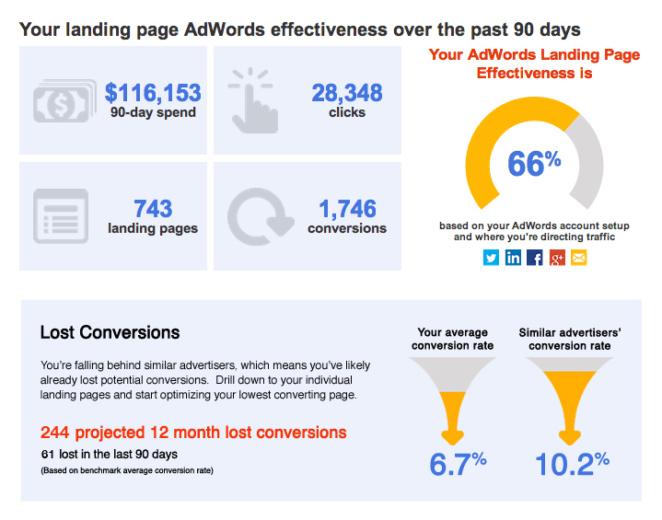
In a very similar fashion to their AdWords Grader, the Landing Page Grader leverages the mountain of data (you might even call that data “big”) WordStream has stockpiled to provide the user with a snapshot of how their landing page performs in comparison to the average of other advertisers in the same industry and spend range.
It’s not going to tell you what your competitors are up to on their own pages, but it can give you an idea of your own areas of opportunity:
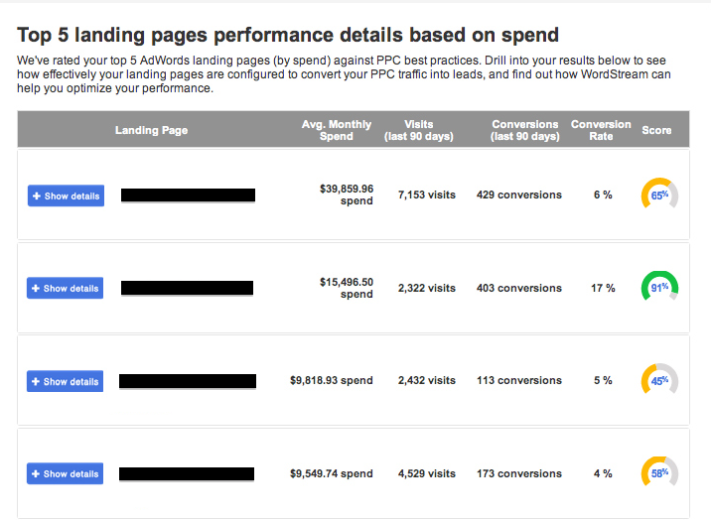
This is a high-level review of your landing page performance as ordered by spend. It’s the epitome of the 80/20 rule in action: focus on your most important pages first, and then worry about the others later. The right-hand graph breaks down how each page performs relative to your competition.
The real meat of this tool, however, comes when you press the “Show details” button accompanying each entry. It brings up three reports:
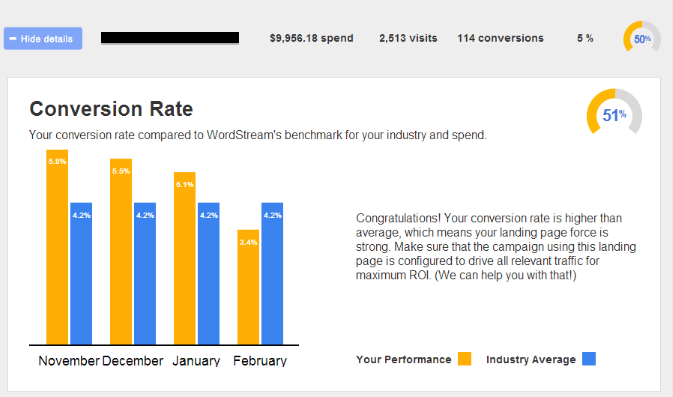
The first is a month-by-month breakdown of your conversion rate in comparison to your industry average. This can clue you in to seasonal downturns, or even industry-wide slowdowns that you might otherwise misattribute to a poor site.
The second…
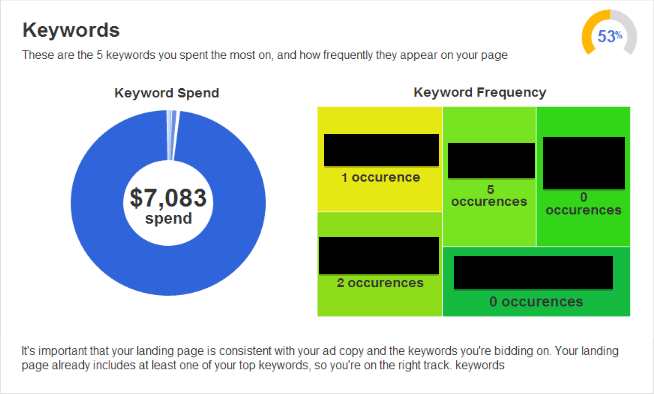
… is a breakdown of how often your top keywords are shown on that landing page. As we all know, Google Quality Score is highly concerned with relevance. Making sure your keywords are actually on your landing page is one of the key factors behind the Quality Score metric. This can be a helpful tool to test how well you’re doing on that front.
The third and final section is potentially the most interesting. While the other tools skew towards a quantitative analysis by breaking down your raw conversion metrics in comparison to your industry, this last part is more qualitative. How well is your landing page adhering to PPC best practices as determined by the presence (or absence) of these critical landing page elements?
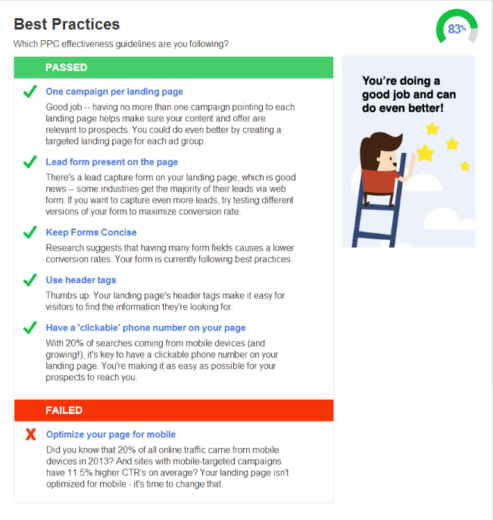
Admittedly, this breakdown is pretty basic. It’s not capable of telling you about the more nuanced aspects of CRO– like “your hero image is too big”, or “you have an arrow literally pointing away from your form”, and “your button says ‘do not click'”. On the other hand, it’s not meant for that purpose.
So who is this for?
The grader itself is free, so there’s no reason not to try it if you’re interested. The competitive benchmarks are compelling, but the actual recommendations probably come as no surprise to a seasoned PPC veteran.
But what if you’re that theoretical small business owner, or a one-man marketing team struggling to keep up with the workload? Then you can likely find some easy, actionable insights here. And if those insights happen to be along the lines of “your landing page contains no lead form”, then there’s a tool for that, too.
If you’re daunted by the prospect of Conversion Rate Optimization, this tool is an excellent way to get your feet wet without any commitment. While this Grader and the accompanying Landing Page Creator aren’t going to replace Unbounce, Optimizely, or any other CRO platform any time soon, they’re not meant to.
So give it a try, leave us your feedback in the comments, and thanks for reading!



